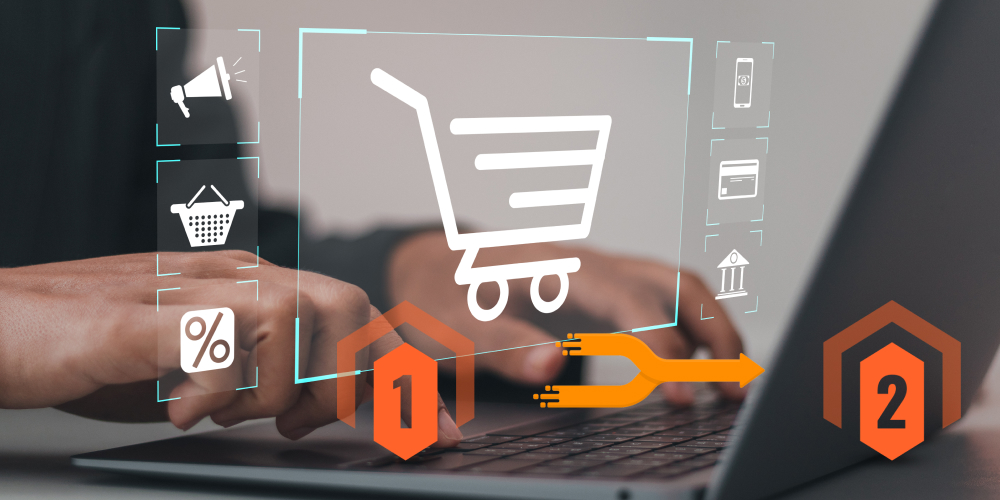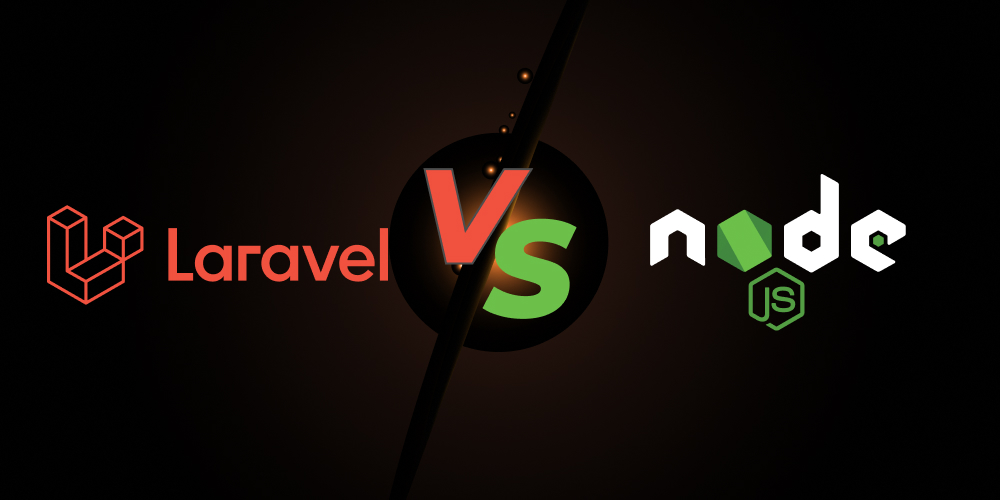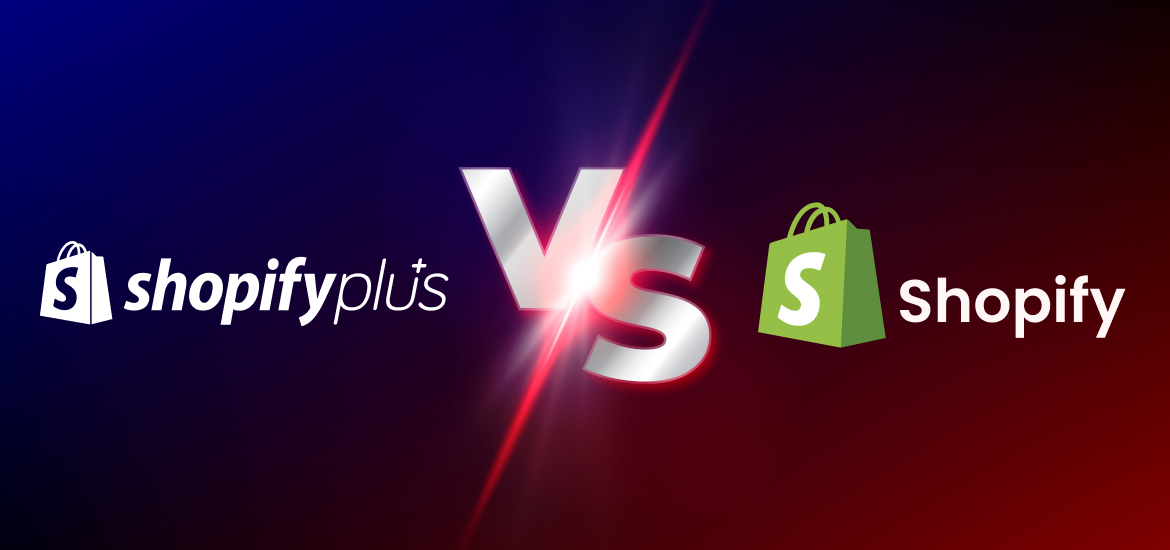To build a successful online store in the eCommerce marketplace, it is crucial to optimize your Shopify store for conversions. With a multitude of eCommerce websites competing for customer engagement, it is required to adopt strategies for Shopify conversion rate optimization from improving product page design to marketing and discount offers.
This blog will guide you on how to optimize conversion rates to upscale your online store by utilizing top 10 tried and tested techniques.
Top Ways of Shopify Conversion Rate Optimization
Here are the top 10 strategies for your Shopify store optimization ranging from product design improvement to offering discounts and promotions:
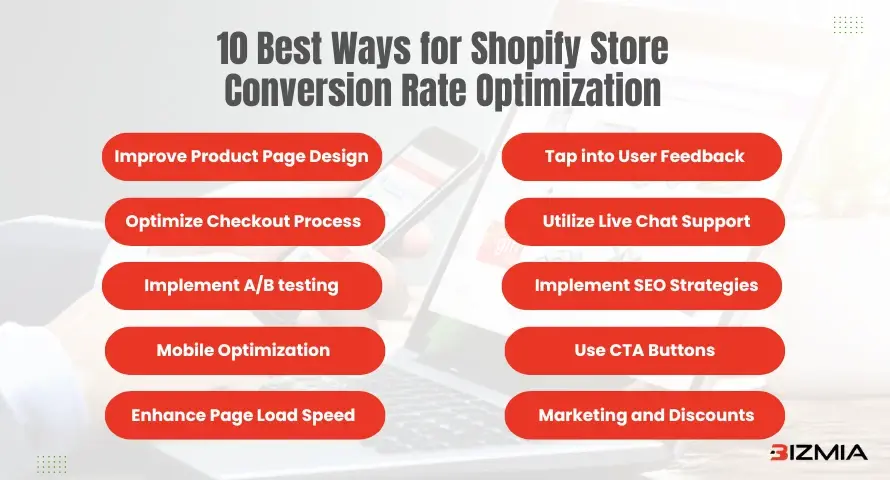
1. Improve Product Page Design
Product pages act as a backbone for your Shopify store as they are the first attraction for your customers. Their design can be enhanced to drive more traffic to the website.
Tips to Improve Product Page Conversion Rates
Consider the following steps to improve your Shopify product page conversion rates:
Use High-Resolution Images
Use high quality professional images of your products in the e-store. High resolution images provide multi-angle views of your selling products, giving customers a more realistic view. So that they can make informed purchases online.
Engaging Product Descriptions
Craft compelling product descriptions that highlight important features and benefits of your products. You can incorporate storytelling techniques about a particular store item to connect with clients.
Customer Reviews
Try to include customer reviews and ratings to build trust between the brand and clients. Potential customers can significantly make decisions based on previous shoppers’ positive feedback. With the help of honest ratings, more buyers can be drawn toward your Shopify store, placing more orders online and can-do effective Shopify conversion rate optimization for your online store.
2. Optimize Checkout Process
Maximized Shopify store conversion rate optimization requires an efficient checkout process. To streamline the checkout process steps involved should be minimized, guest checkout options should be introduced, clear progress indicators can be introduced, and multiple payment options should be offered.
By following these steps, you can ensure increased sales and smooth shopping experience:
Reduce Steps
To minimize steps in the checkout process, the following options can be used:
- One-page Checkout Option
Try to introduce a single checkout page on your online store. Shoppers can write all their necessary information on that single page while placing orders, avoiding hassle and minimizing cart abandonment and for other benefits of Shopify checkout extensibility. - Omit Unnecessary Details
Retails can avoid unnecessary details which are not required for transactions. Save client’s time and only ask details which are essential for instance contact details, payment information, and shipping address. - Implement Autofill Features
You can also save customers’ time by giving autofill options for details, increasing product views on site and sales as well, and optimizing the Shopify checkout process.
- One-page Checkout Option
Guest Checkout
Facilitate buyers to complete their purchase without creating an account. In this way, you can cater to an audience fearing online money scams and increase Shopify conversion rate.
Simple Registration
Keep account creation on your site a straightforward process for people who do want to create an account while doing online shopping. You can simplify the process by allowing sign-in through social media platforms or email accounts which is also known as a Single Sign-on (SSO).
Prompt Account Creation
Give small incentives for account creation on your brand’s page such as discounts on next purchases, building trust, and engaging customers by sending them a welcome email, not only that, but you can also offer promos or discounts post-purchase or when they become a returning buyer.
Clean Progress Indicators
Consider providing progress indicators to customers during online shopping, giving a sense of direction. You can make simple page design to avoid any clutter on site. For clear visualization give a horizontal bar for search at the top of your web page, try to add specific colors for tasks like you can use green to indicate completion of steps. Moreover, animations can also be added such a smooth transition on moving to next page.
Labeling
Each step in the checkout process should be clearly labeled such as “payment method” or “review order”. In this way, clients feel that orders are under control, reassuring the customer-friendly design of the brand.
Real-time Feedback
Merchants can consider providing real time feedback to buyers during order placement. For example, if a person enters wrong information on the website, highlight this so that correction can be made. In this way by assisting clients during their shopping trip you can achieve your targets of Shopify conversion rate optimization and indirectly improve brand sales.
Various Payment Options
Multiple payment options can cater to more audience’s payment preferences. Popular payment methods like Apple Pay, PayPal, debit, and credit cards can be included. Also make sure that your checkout process is mobile wallet-friendly, allowing quick transactions and enhancing the user experience.
Hire our experts for Payment Gateway Integrations on your Shopify store
3. Implement A/B testing
Another proven way for eCommerce conversion rate optimization is by utilizing A/B testing. Through this testing method, you can draw a comparison between two versions of an element or a webpage.
Steps to Implement A/B Testing
Here are some steps to implement the A/B testing strategy:
Key Element Testing
Start with identifying your goal such as reduction in cart abandonment or increased click through rates to achieve ‘Shopify conversion rate optimization’ of your store. Then start focusing on some critical elements of your e-store like headlines, call-to-action (CTA) buttons, images, or product descriptions.
- Headlines
Customer engagement with brand can be influenced by making changes to page headlines such as in tone, length, wording, and phrasing of headlines. These things help to capture the client’s attention. - Call-to-Action (CTA) buttons
Modify call-to-action buttons to grab customer attention. You can try different colors for CTA buttons in contrast with website colors, size, placement, and text of these buttons can also be replaced. - Images
Try to test different images of your selling product with different backgrounds and from multiple angles. Also, try testing image placement or size to check for any improvement in Shopify conversion rate. - Product Descriptions
Another element for testing is product descriptions. Try to mold product captions as per the nature of that item, brief and catchy descriptions for some products, and narrative captions for others.
- Headlines
Variations
Design variation of key element you want to test. Version A is the original one or the control design. The version B you want to test included changes and called as variant. Now you can run the test.
Results Analysis
After implementing A/B testing move towards result analysis. With the help of analytics tools such as Shopify Analytics, Google Analytics, VWO, or Optimizely you can monitor the performance of tests and opt for the version of key element more suitable for Shopify conversion rate optimization of your e-store.
4. Mobile Optimization
Make your Shopify store mobile-friendly because these days there’s a surge in order placement through mobile phones.
Here are some ways to have mobile optimized Shopify store:
Responsive Themes
Ensure your site’s design must be responsive and looks good on all devices. You can rearrange the store’s components or resize the images for a better mobile experience. Moreover, you can utilize fluid grid system to adjust your layout as per screen size.
Simple Navigation
Make your brand’s menu simple and accessible as mobile users prefer straightforward navigation. For this you can prioritize key items of your brand or try to make sub-categories of items for instance under “Clothing” you can make sub sections like “Kids, Women, or Men”.
5. Enhance Page Load Speed
Shopify conversion rates and user experience can be influenced by page load speed. Here are some useful tips to improve your page load speed to increase your Shopify conversion rate:
Image Optimization
Through image compression tools like ImageOptim or TinyPNG you can reduce image size without compromising quality. By this, you can strike a balance between the visuals and performance of your e-store. Image optimization would help to give effective display of products, increasing viewers and Shopify conversion rate optimization.
Minify JavaScript and CSS
With the help of minifying tools such as CSSNano for CSS and UglifyJS for JavaScript you can adjust size and remove unnecessary elements like whitespace, line breaks, and comments, enhancing loading speed.
Performance Monitoring
For ongoing improvements, regularly monitor your brand performance online. You can utilize monitoring tools like GTmetrix, or Google PageSpeed Insights. These tools also suggest areas for improvement in your online store.
Partner with us to develop a leading Shopify theme
6. Tap into User Feedback
You can effectively utilize user feedback for your store to improve Shopify conversion optimization through user-generated content, showcasing testimonials, and sales notifications.
Let’s have a look at how to implement these tips:
User Generated Content
Encourage your clients by offering discounts and other offers for their next order if they share pictures of purchased items with reviews. By attaching these images under the review section of that product you can build credibility among potential shoppers, increasing your product sales and improving Shopify conversion rate optimization.
Showcasing Testimonials
You can showcase recommendations from customers on your homepage or product page, influencing brand sales positively, enhancing customer engagement also. You can try to display testimonials on the homepage so that potential buyers can see feedback immediately.
Sales Notifications
Use sales notifications on your web page to let people know what others have bought from your store. This would develop a sense of urgency among viewers, compelling them to place orders for their desired products.
7. Utilize Live Chat Support
The shopping experience can be significantly enhanced by introducing a live chat feature on your online page. Brands can address client’s concerns in real time through quick assistance, post-purchase support, and active engagement.
Quick Assistance
To reduce hesitation during the buying process, give quick replies to clients’ queries. Moreover, integrate your live chat and FAQs section to address customers’ issues immediately.
Post Purchase Support
Live chat options on your website should also allow post-purchase inquiries from clients, order tracking, and follow-up conversations for return and exchange of purchased items.
Active Engagement
Incorporate tools that start a pop-up chat when a visitor spends a certain amount of time on your page. This will help to assist hesitant customers, converting them into buyers.
8. Implement SEO Strategies
Search engine optimization (SEO) is the key for improving Shopify product page conversion rates. Here are some effective ways to implement in your Shopify store such as keyword search, product title and description optimization, blog content, optimize meta tags, and site structure.
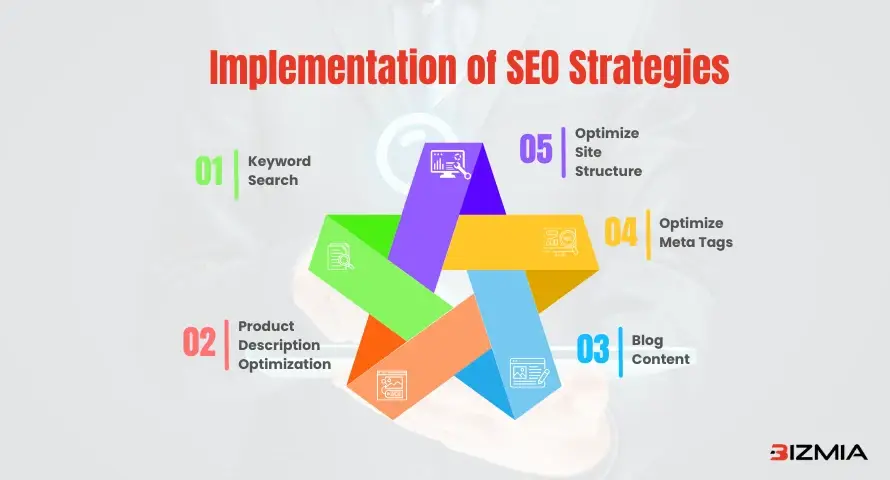
Keyword Search
Start your SEO optimization process with keyword research. Use tools like Google Keyword Planner or SEMrush to research relevant keywords that your targeted audience searches for. Moreover, try to look for some long tail keywords as well to Optimize the Shopify store for conversions.
Product Description Optimization
Another way for Shopify store optimization is to optimize your product titles and descriptions. By adding relevant keywords naturally, using unique and valuable product titles and descriptions, and implementing structure data markup, you can potentially enhance click-through rates, improving site ranking.
Blog Content
Creating a blog with valuable content would help you to Optimize the Shopify store for conversions. Try to address your clients’ queries in your write-up. Incorporate keywords in posts, use internal links to direct the audience to specific pages or products, and allow comments in posts to enhance customer engagement with brand.
Optimize Meta Tags
Write distinct title tags and meta descriptions, using catchy words and staying in the character limit for each. Optimized meta tags assist in improving click-through rates, increasing Shopify conversion rate.
Optimize Site Structure
Make your site navigation user-friendly and mobile-optimized. Use a clear structure and mobile-friendly design to facilitate customers’ shopping journeys. Also, improve your page load speed to enhance e-store visibility in search results.
9. Use CTA Buttons
Shopify store optimization techniques also include high quality Call-to-action (CTA) buttons for guiding clients during their purchasing journeys. To boost conversation with potential clients you can add contrasting colors, action-oriented text, and focus proper placement of CTAs and performance monitoring.
Contrasting Colors
Understand and implement color psychology techniques while creating CTA buttons. For example, red portrays urgency, and green can exhibit action and safety. Also try to add colors in contrast with the background, improving visibility.
You can also perform A/B tests to identify suitable color combinations and monitor how color alterations influence conversion rates for Shopify stores.
Action-oriented Text
Try to use compelling language for CTA buttons. By using certain catchy words like “Hire Now”, “Unlock your Discount”, or “Shop Now”, you can attract a larger audience on your page.
Moreover, CTA text length should be concise and readable at a glance.
Placement of CTAs
Place your CTAs above the fold on your page, so that they are easily visible to potential clients. Try to repeat CTA buttons at multiple spots in your blog depending upon the write-up length. Also ensure that your CTAs are mobile-friendly, catering to a larger audience.
Performance Monitoring
After designing and placing CTA buttons in your blog post, the next step is to monitor their performance regularly. You have to check whether these buttons are influencing conversion rates on your Shopify store or not. Also, monitor click-through rates and adjust as per analytics, utilizing tools like Google Analytics, Hotjar, or Crazy Egg.
10. Marketing and Discounts
By offering discounts and promotions you can incentivize customers to complete their purchases. By strategically giving time limited offers, discounts, bundle and holiday promotions customers are compelled to buy more products.
Time-limited Offers
Giving time-limited offers creates a sense of urgency among shoppers to grab the deal. You can introduce countdown timers for offers about to expire. This would increase brand sales, urging clients to make more purchases.
Discounts
Offering discounts on order shipping above a certain amount is important for enhancing Shopify’s conversion rate. It encourages people to buy more items to avail themselves of discounted or free shipping.
Bundle Offers
Design bundles of complementary products at discounted rates to increase orders. Customers can see the value provided in bundle offers, urging them to avail of bundles, leading to Shopify conversion rate optimization.
Holiday Promotions
You can also align your brand’s promotional offers with holidays or seasonal trends such as Black Friday, or back-to-school season, drawing more traffic to Shopify store.
Try to follow seasons-based themes in your promotional campaigns like promoting summer attire towards the end of the Winter season is a good option catering to the audience’s clothing needs.
Conclusion
Shopify conversion rate optimization is a consistent process. Consistent efforts and improvement are required to enhance customer engagement. If you want to know how to optimize Shopify product pages and increase conversion rate, try to follow these 10 most reliable techniques. These steps cater to every aspect of your Shopify store, ranging from improving product page design to marketing and discount offers, ensuring a smooth user experience and a larger brand audience.
Optimize Your Shopify Store Conversions with Bizmia
Are you wondering how to modify your Shopify store for improved conversion rates? Consider teaming up with experts, who are specialized in Shopify conversion rate optimization. Our professionals at Bizmia provide customized Shopify solutions, driving excellent results!
FAQs
1. What is Shopify conversion rate optimization?
It is a process involving multiple strategies and steps to increase the number of visitors to a Shopify store who want to buy goods online. You can improve your site design, optimize checkout process, make it mobile friendly, increase page load speed, utilize user feedback, live chat options and CTA buttons, and offer discounts for Shopify conversion rate optimization.
2. How can I optimize my Shopify product page?
You can optimize the Shopify product page by optimizing high-quality images to display products from multiple angles, writing compelling product descriptions to highlight prominent features and benefits, ensuring user-friendly site layouts to enhance content visibility, adding customer reviews to increase client engagement, and optimizing page content to have higher bounce rates.
3. What can I do to optimize my Shopify checkout process?
You can focus on reducing the number of steps ideally to one step to engage customers, introducing guest checkouts to avoid account creation by customers, giving progress indicators to build transparency, and ensuring secure payment options like PayPal, credit cards or debit cards to have scam free transactions.





